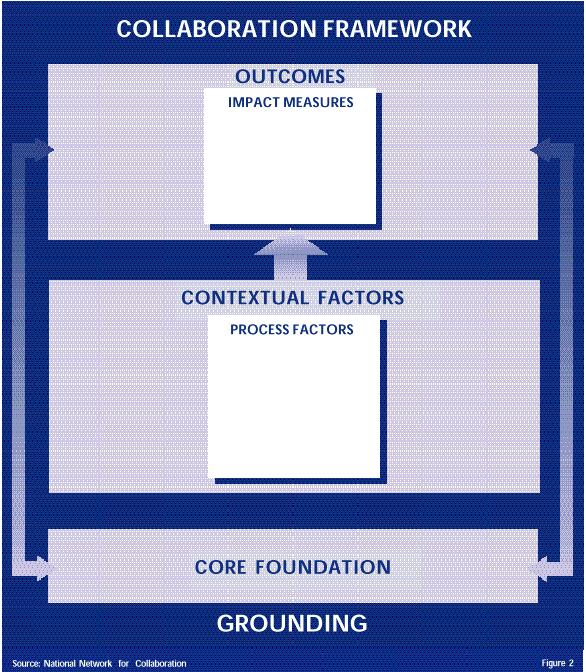| Framework Menu | Main Menu |
| Framework Menu | Main Menu |
Framework ModelTechnically, collaboration is a process of participation through which people, groups and organizations work together to achieve desired results. Starting or sustaining a collaborative journey is exciting, sometimes stressful, and even new for many people, groups, and organizations. |
Defining the Relationship of CollaboratorsThe first steps focus on defining existing or potential relationships. A range of relationships have been defined in the “Community Linkages – Choices and Decisions” (Figure 1) matrix. This matrix defines five levels of relationships and the purpose, structures, and processes for each level. Using “Community Linkages” in companionship with the Framework provides focus and clarity in the dialog supporting new relationships. Recognizing and strengthening the interrelatedness contributes to the “infrastructure” of the collaboration. |
| Levels | Purpose | | |
| Networking |
|
|
|
| Cooperation or Alliance |
|
|
|
|
Coordination or Partnership | Share resources to address common issues something new |
|
|
| Coalition |
|
|
|
| Collaboration |
|
|
|
| Source: Community Based Collaborations – Wellness Multiplied 1994,...................Figure1 Teresa Hogue, Oregon Center for Community Leadership 
|

Framework Menu | Main Menu |